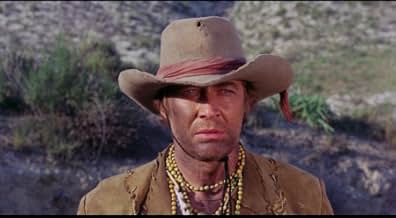I watched this movie for the second time and really enjoyed it. I see there is allot of mixed feelings about Matalo. Too me this movie had very surreal tones and eerie sounds giving the Benson Town that Ghost Town feel with a touch of Horror film suspense to it. I know the costumes had a hippie look to them but the opening scene of the movie of Bart out of focus walking to be hanged was brilliant camera work and direction. Corrado Pani (Bart)in his first and only SW he ever played in was fantastic as the lead bad guy role. I am shocked to see him not in any SW after this for the genre was alive still in 1970 and slowly fizzing out till 1978. It shows Bart and his ultimate drive in life is money and it does not matter who you walk over or hurt to get it. I loved allot of scenes in the movie like Bart doing a sort of flashback thought of his father and how important money is and the old Benson lady in denial who believed that the money would revive the great Benson name and life back in the town. The boomerang slinging stranger a different type of hero who is tormented by Bart's gang and to be saved by his horse with a strange supernatural touch to the scene. What, I disliked was the final scene with the gunfire between Bart and his gang and the repetition of the camera spinning over and over was too much. It was great to see Bart show his sole purpose in life as the only one going after the donkey with all the money even though to no avail being mortally wounded.












